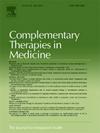The efficacy of physical activity or exercise among individuals with cerebral palsy: An umbrella review of systematic reviews
IF 3.5
3区 医学
Q1 INTEGRATIVE & COMPLEMENTARY MEDICINE
引用次数: 0
Abstract
Introduction
Cerebral palsy (CP) is the most common childhood disability, affecting 1.5–3 per 1000 live births. Physical exercises have been shown to improve muscle and limb outcomes in CP. This systematic review critically appraises existing systematic reviews on the effects of physical activity and exercise on physical, functional, and psychosocial outcomes in individuals with CP compared to those without.
Methods
Using a PICO framework, the question was: In patients with CP, do physical activity and exercise improve muscle- and limb-related outcomes compared to no intervention or usual care? PubMed, Cochrane, ISI Web of Science, and Embase were searched for systematic reviews meeting inclusion criteria. Seven reviews focusing on exercise-related outcomes in CP were synthesized.
Results
Exergaming significantly improved fine motor dexterity (SMD = 3.12) but not gross manual dexterity. Progressive resistance and general physical activity increased muscle strength (SMD = 0.59), while aerobic exercise showed mixed results. Task-oriented training led to large improvements in gross motor function (SMD = 6.04–11.05) and functional independence (SMD = 6.44). VR-based and aerobic interventions had modest or nonsignificant effects on mobility, balance, and walking. Adverse events were infrequently reported and generally mild. Task-oriented and VR-assisted training showed the most consistent benefits, though heterogeneity and incomplete reporting limit conclusions.
Conclusion
Physical exercises, particularly task-oriented and VR-assisted training, improve motor and limb functions in CP. Future research with longer follow-up, larger samples, and better safety reporting is needed to confirm clinical impact.
Funding
The King Salman Center for Disability Research, Grant/Award Number: KSRG-2024–036. PROSPERO registration number: CRD42025646412.
体力活动或锻炼对脑瘫患者的疗效:系统综述的总括性综述
脑瘫(CP)是最常见的儿童残疾,每1000名活产婴儿中有1.5-3例受到影响。体育锻炼已被证明可以改善CP患者的肌肉和肢体预后。本系统综述对现有的关于体育活动和锻炼对CP患者的身体、功能和社会心理预后影响的系统综述进行了批判性评价。方法使用PICO框架,问题是:在CP患者中,与不干预或常规护理相比,体育活动和锻炼是否能改善肌肉和肢体相关的预后?检索PubMed、Cochrane、ISI Web of Science和Embase,寻找符合纳入标准的系统综述。我们综合了7篇关于CP中运动相关结果的综述。结果游戏可显著提高小动作灵巧度(SMD = 3.12),但对大手灵巧度无显著影响。逐渐的阻力和一般的体力活动增加了肌肉力量(SMD = 0.59),而有氧运动的结果则好坏参半。任务导向训练导致大肌肉运动功能(SMD = 6.04-11.05)和功能独立性(SMD = 6.44)的显著改善。基于vr的干预和有氧干预对活动能力、平衡和行走有适度或不显著的影响。不良事件很少被报道,而且通常是轻微的。任务导向和vr辅助训练显示出最一致的益处,尽管异质性和不完整的报告限制了结论。结论体育锻炼,特别是任务导向和vr辅助训练,可以改善CP患者的运动和肢体功能。未来的研究需要更长的随访时间、更大的样本和更好的安全性报告来证实临床影响。萨勒曼国王残疾研究中心,资助/奖励号:KSRG-2024-036。普洛斯彼罗注册号:CRD42025646412。
本文章由计算机程序翻译,如有差异,请以英文原文为准。
求助全文
约1分钟内获得全文
求助全文
来源期刊

Complementary therapies in medicine
医学-全科医学与补充医学
CiteScore
8.60
自引率
2.80%
发文量
101
审稿时长
112 days
期刊介绍:
Complementary Therapies in Medicine is an international, peer-reviewed journal that has considerable appeal to anyone who seeks objective and critical information on complementary therapies or who wishes to deepen their understanding of these approaches. It will be of particular interest to healthcare practitioners including family practitioners, complementary therapists, nurses, and physiotherapists; to academics including social scientists and CAM researchers; to healthcare managers; and to patients. Complementary Therapies in Medicine aims to publish valid, relevant and rigorous research and serious discussion articles with the main purpose of improving healthcare.
 求助内容:
求助内容: 应助结果提醒方式:
应助结果提醒方式:


